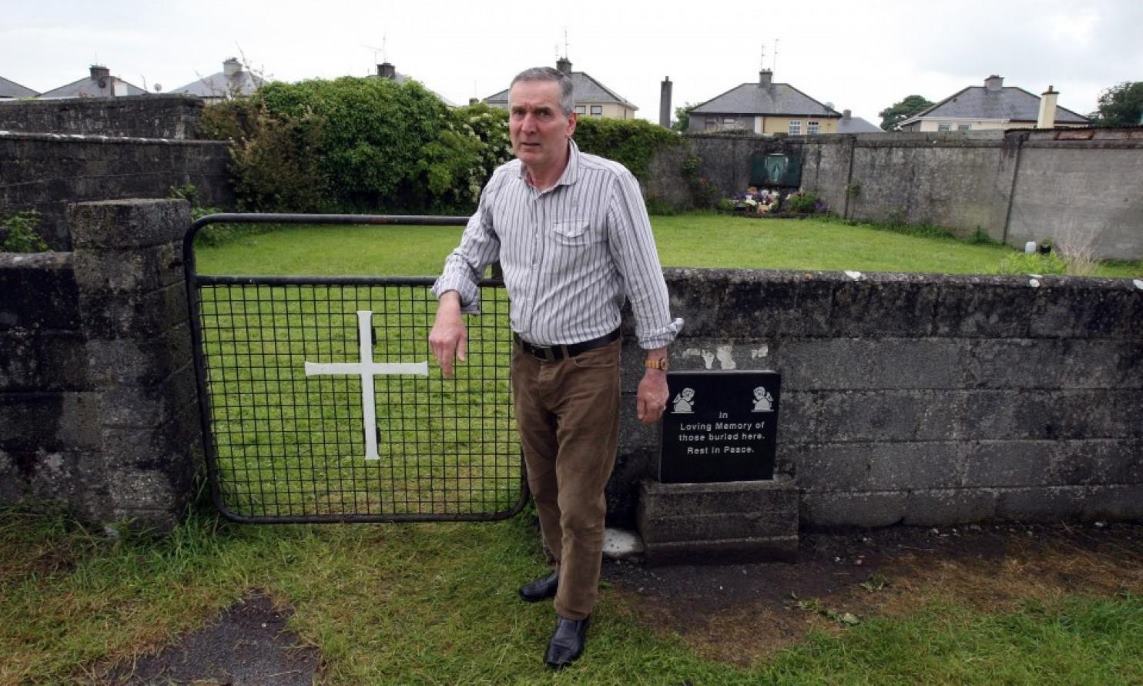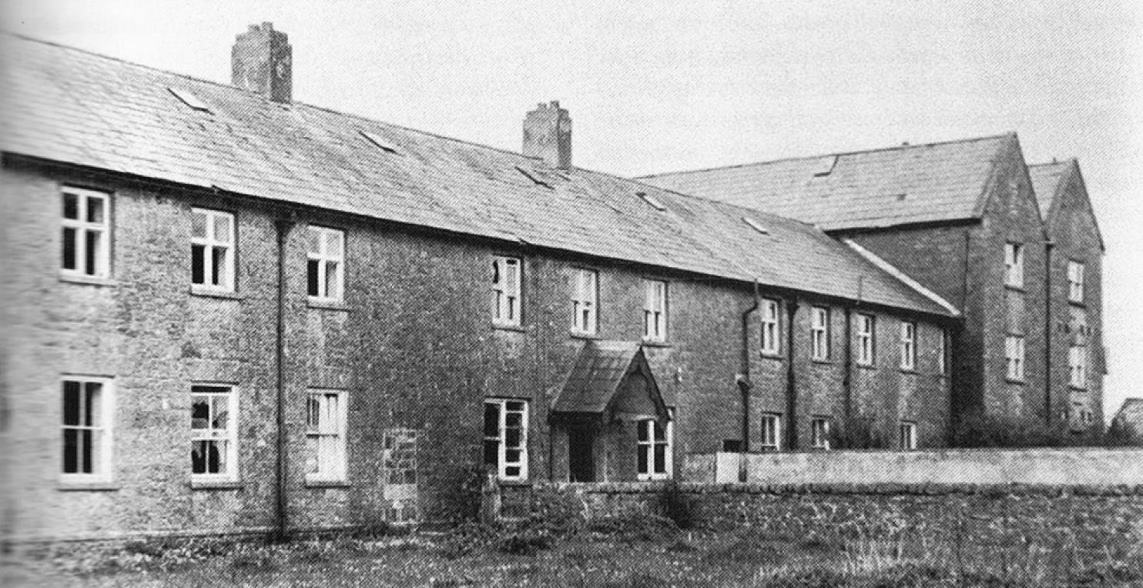|
The ‘mother and baby home’ at Tuam, Ireland, where friends just ‘disappeared, one after the other’
By Fred Barbash
Among the bitter images of his childhood at “the Home for Mothers and Babies” in Tuam, Ireland, two stand out as particularly wrenching to John Pascal Rodgers. Of the first, he has no independent recollection as he was only a year and a half old. His mother told him 48 years later about it. One day at Tuam, she explained, she found out that she was about to be separated from her son by the nuns who ran the home, perhaps forever. So she came in and “cut off a lock of my hair as a memento.” The nuns then sent her to an institution then called “the Magdalene Asylum” in Galway, he said. She was 17-years-old. “The key was turned in the door and she remained there 15 years until she got the courage to escape.” Of the second image, some four years later, he does have independent knowledge because he was older then and it was so painful. He was standing in the shadow of the home’s 10-foot walls, utterly alone and friendless. Never mind that there might have been 100 or 150 other children on the “so-called playground,” as he described it. He stood alone deliberately because he had already learned in his short life that even though you made a friend, you wouldn’t keep a friend, not among the children at Tuam. “I’d become friends with one or two of them and they’d disappear one after the other,” Rodgers recalled in a phone interview with The Washington Post. “And I cried. And a week later, I might have gotten over that, and then I’d become friendly with another little chap,” he said. “And he’d disappear. And I cried.” Eventually he stopped trying to have friends, Rodgers said. He “stopped trusting.” What became of those children who disappeared? “If he was a healthy little boy, he was probably just bought for a price and shipped off to America or Australia,” he said. “Most went to America.” And of the ones who were not healthy? “There were children who were extremely ill,” he said. “And they would disappear, too. But that was all kept from view. I wouldn’t have known about those underground vaults and passageways,” he said. “They were accessible only to the nuns.” The memories of the “mother and baby” home at Tuam, operated by the Sisters of Bon Secours in Ireland from 1922 to 1961, known to him just as “The Home,” all came rushing back to Rodgers, 69, on March 3. That was the day a government commission investigating what had been a theory — that as many as 796 children born of unmarried mothers who had died at the home had been left in what appeared to be a disused underground waste facility — determined that it was very likely a reality. A dig and a forensic examination revealed a structure composed of 17 underground chambers, containing “significant quantities of human remains,” the remnants of children who would have been anywhere from 35 fetal weeks old, as the commission put it, to 3 years old, dating from 1925 to 1961. The concentration of samples, said the commission’s report, was “likely to date from the 1950s,” just when John Rodgers was living there. Ireland is still absorbing the shock of what Prime Minister Enda Kenny called a “chamber of horrors.” There are calls now for a broader, wider investigation into all the homes used by all of Ireland’s counties to hide away unwed mothers and their children in the care of the Catholic Church, which then separated them for life, farming the children out to foster homes for a fee or making them available for adoption to affluent Americans, also for a fee. Since the news broke, Ireland has been awash in guilt and shame, just as it has many times before as old wounds have been lanced, with the knowledge that the scandal at Tuam, and perhaps elsewhere, wasn’t that much of a secret but rather something everybody knew or should have known, but from which they looked away. “No nuns broke into our homes to kidnap our children,” Kenny said after the revelations. “We gave them up to what we convinced ourselves was the nuns’ care.” “From my own point of view,” Lindsey Earner-Byrne, a social historian at University College Dublin said Saturday on RTE’s Marian Finucane show, “I would have a problem with the characterization of the story as an element of our hidden history. Because I think in fact it’s just the history we haven’t been willing to acknowledge. “They knew that the institutionalization of these infants would leave them much more vulnerable to infectious diseases and so on,” she said, and that “the price of that cultural and moral discrimination, if you like, was that these babies … died at a rate six times that of other babies.” Rodgers’s account of the home supports the fact that these homes were breeding grounds for infectious diseases. “They had old, horrible outdoor toilets on the playground,” Rodgers said. “They were constantly full because there were so many children on the playground, to me it looked like 150, and only half a dozen toilets. The bowls were constantly full. I remember going in a corner” to avoid them. “The only reason for my being there 5½ years is I was a walking skeleton. And anyone who came in to pick up a nice infant, they wanted someone who was healthy.” It was the painstaking research of Catherine Corless, a local historian with no academic affiliation, that led to the establishment of the investigative commission. It was known that a graveyard for children had once been on the grounds of the home, and Corless, as part of an effort to raise money for a proper memorial, began doing intensive research on who, exactly, was buried there. She obtained the death records of 796 children, ranging from newborns to 9-year-olds, who had died of a variety of illnesses at the home. Yet she could find none of the names of those children among the records of those buried in any nearby cemetery. She learned that two boys playing in the area in 1975 reported stumbling across what appeared to be human skeletons in a pit. And using old maps of the homes, she determined that the spot where the boys made their gruesome discovery was also the site where a septic sewage tank had been located when the home was a workhouse in the late 19th and early 20th centuries. Her theory attracted international publicity in 2014 and then, in equal measure, disbelief. “I was a bit skeptical myself” about Corless’s story, said Rodgers, 69, the author of a moving book about his mother, titled “For the Love of My Mother.” “I thought, ‘How could that be possible?’ It broke my heart when it was confirmed as being true. It was an awful thing to have to digest,” he said. And “it reawakened so many memories. It was confirmation of everything my mother told me,” he said, his voice breaking with sorrow. Rodgers himself was finally removed at age 6 by foster parents, an older couple, he said, looking “for someone to help them with their chores.” But he had not heard the last of his mother, an indomitable figure named Bridget Norah Rodgers, whom Rodgers calls “Bridey.” She ultimately tracked him down and came to see him at the home of the foster parents. They advised her to flee to England before the police found her and recaptured her. His foster father, Rodgers recalled, gave her the boat fare. That experience of his mother fleeing, as if a criminal, left a deep impression and not a good one, Rodgers said. “I thought she was a woman of ill repute, running away from the police, running away from the nuns. Being a young boy, I didn’t know what this meant. I was horrified. Thereafter I disowned my mother completely for about 25 years. I didn’t love her. I didn’t understand her.” Rodgers, at age 16, moved to Manchester, England, and worked in construction. His mother tracked him down there as well, “wanting to take care of me,” he said. “To keep away from my mother, I went as far as Australia. And I left specific instructions to people I knew to write a letter to my mother Bridey and tell her they didn’t know where I’d gone.” Finally, he said, at 23, he met a “lovely lady,” bought a house, had three children and settled down in Galway. Then, in 1985, he started having recurring dreams about his mother. In the dream, she was down and out in London, Rodgers said, “going through litter bins, looking for letters with her son’s name on it. If you dream about this once, that’s one thing,” he said. “You dream about it three times, and you’re cracking up or see it as a message.” “When it happened the third time, I got up and said, ‘I’m going to England to look for my mother.'” He had no luck finding her at first, until he placed an ad in a paper in the “rewards’ section. “Three days later, I arrived home in Ireland and my wife says, ‘There’s a telegram on the table for you.’ And the telegram was from my mother.” “That,” he said, “was the best day of my life.” “We communicated. We phoned. We wrote every week. And then her and her husband came to meet me for the first time in 20 years. It was a very emotional occasion. One moment she didn’t have a living relative. And then all of a sudden she had a son, a beautiful daughter-in-law and three lovely grandchildren. “And during this reunification, the most moving moment was when my mother Bridey went through her suitcase and presented this lock of hair to my wife,” Rodgers said, choking with emotion as he recounted his mother’s words to his wife: “‘Julie, darling. I regret I wasn’t here to give my son away when you got married. I’m releasing him now. He’s yours.’” Six years later, she died. And Rodgers, who had promised her to keep her secrets until her death, began to tell her story. Contact: fred.barbash@washpost.com
|
.
Any original material on these pages is copyright © BishopAccountability.org 2004. Reproduce freely with attribution.

